#Taoist Principles
Explore tagged Tumblr posts
Text
The Scope of Application of the Law of Positive and Negative Energy Summing to Zero
Xuefeng
January 26, 2024
(Translation edited by Qinyou)
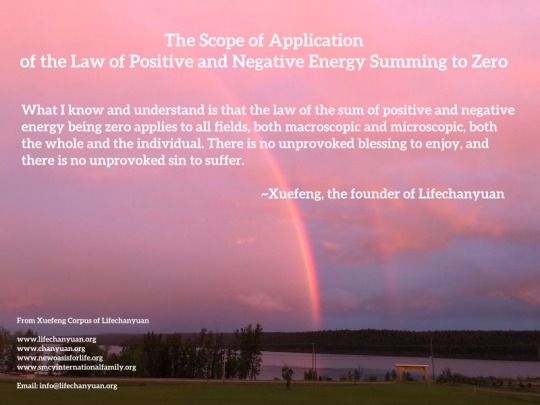
While exploring the origin of the universe and the balance of cosmic energy, especially the principles of natural law, the mechanism of nature, and the principle of justice in Tao, I discovered this law, namely, “the sum of positive and negative energy is zero.”
If there is a positive universe, there is a negative universe; if there is positive energy, there is negative energy; if there is a positive electron, there is a negative electron; if there are people, there are anti-people; if there are gods, there are demons; if there is heaven, there is hell, etc. This law indicates that what is given and what is gained are equal, or in other words, giving + gaining = zero.
This law is the balance mechanism of the universe, ensuring that the development of anything does not go to extremes. This balance mechanism is the natural law and also embodies the justice of Tao. Understanding and applying this law, we will know the mechanism of nature.
Now a question arises, since the sum of positive and negative energy is zero, then, is happiness + pain = zero? Is love + hate = zero? Is cruelty + kindness = zero? Is enjoyment + suffering = zero? Etc.
There is a very obvious fact that seems to prove that this law only applies to the category of energy and does not apply to other categories. This fact is that the Super Celestial Beings in the Celestial Islands Continent of the Elysium World can enjoy eternity without worries and pains, and they will not suffer or be punished; while many lives trapped in hell are “irretrievable” and have to endure eternal pain; from the perspective of a single life form, the law of the sum of positive and negative energy being zero is not established, and there is no formula of happiness + pain = zero.
This means that the law of the sum of positive and negative energy being zero applies to the macroscopic, not to the microscopic; it applies to the whole, not to the individual.
Is this really the case?
Let some life or lives enjoy a good life forever for no reason, let some life or lives suffer pain and torture forever for no reason, is this possible? If it is possible, where is the natural law? Where is the justice of the universe? If it is not possible, where is the principle? Is it necessary to go through suffering and torture to enjoy a good and happy life? Do you have to endure hardship before you can go to heaven?
What I know and understand is that the law of the sum of positive and negative energy being zero applies to all fields, both macroscopic and microscopic, both the whole and the individual. There is no unprovoked blessing to enjoy, and there is no unprovoked sin to suffer. If you want to enjoy the benefits of heaven forever, you must meet the standards of heaven for life. This standard mainly depends on the following three items.
The quality of LIFE must meet the standard.
Have enough merit, that is, capital.
No worldly ties, no debt.
To meet the above three standards, it is actually a very difficult and painful process. In this sense, happiness + pain = zero is established. Once the standard is met, you can enjoy eternal happiness, but the possibility of meeting the standard is very small. It is a miracle if one percent of humans meet the standard. If you do not meet the standard, you will inevitably suffer endless suffering and torture, reincarnation endlessly, there is no end in sight, because we will find that we are suffering from pain and torture, but we are enjoying short-term happiness and joy, this is like a person, every day go to work to make money, spend all the money you earn every day, you can’t save a penny in the bank of heaven, where is the money to enjoy a good life in heaven? Some people complain that the Greatest Creator is unfair, saying that the common people are suffering pain, enduring hardship, and bearing sins; why doesn’t the Greatest Creator relieve the suffering of the common people?
I asked, “Who among the common people is willing to heed the call of the Greatest Creator and walk the path of the Greatest Creator? Can you find one? While disregarding the call of the Greatest Creator and complaining about the perceived injustice of the Greatest Creator, can you really blame the Greatest Creator?”
Perhaps someone might ask, “How is it that the law of the sum of positive and negative energy becoming zero fails for those wealthy individuals who, without enduring much pain or torment, enjoy a life of luxury?”
The law has not failed. The perceived failure of the law is due to two reasons: one, you have not seen the pressures and trials they have endured; two, you have not seen their future. They have shouldered more risk and mental strain than the average person, experiencing psychological and spiritual torment. Therefore, they are entitled to enjoy material wealth, but their future is bleak. The wealthier a person is, the greater their responsibility for the destruction of nature, the more money, the greater the sin. The more material wealth a person possesses, the heavier their sin, and the more severe their future punishment. Therefore, one should never envy or admire the rich, but rather pity them.
In summary, the law of the sum of positive and negative energy applies across all domains.
~~~
If you like this article and would like to know more about Lifechanyuan values, please check this link, thanks: https://lifechanyuanvalues.wordpress.com/2024/06/23/some-pdfs-of-lifechanyuan-values/
May Wisdom, Peace & Love from the Greatest Creator be with you.🙏
#Universal Balance#Cosmic Energy#Natural Law#Taoist Principles#Positive and Negative Energy#Macroscopic and Microscopic#Happiness and Pain#Love and Hate#Cruelty and Kindness#Eternal Justice#Celestial Beings#Life Standards#Merit and Capital#Worldly Ties#Wealth and Responsibility#Spiritual and Material Wealth#Eternal Happiness#Reincarnation#Human Suffering#lifechanyuan#the Second Home community#the Greatest Creator
0 notes
Text
His sole concern was to eat three meals a day and to sleep soundly at night. Having neither duties nor worries, he was free and content to tour the mansions and meet friends, to make new acquaintances and form new alliances at his leisure.
Me: Wow, I didn't believe that giving Sun Wukong an empty title (again) would work, but it seems that this time is actually working! Who knew that simply leaving Monkey be just like in Flower - Fruit Mountain would have such good results, they only needed to leave him happy!
The fucking title of the chapter:
Disrupting the Peach Festival, the Great Sage steals elixir; With revolt in Heaven, many gods would seize the fiend.
Me: Oh.
#Who... Gives a monkey. A MONKEY#The job of taking care of a bunch of heavenly and delicious fruit#They really thought that the monkey wouldn't eat the immortal fruit#Patriarch Subodhi don't look at your disciple his ass is not practicing taoist principles!#journey to the west daily#Jttwdaily#journey to the west#sun wukong
14 notes
·
View notes
Note
How anthropocentric did historical alchemy (time period and area of your choosing) tend to be? If the whole field were to be redeveloped from first principles by the Horse Society, for example, would it inevitably be unrecognizable, or would it fit into actual human conceptions of alchemy pretty well?
What an interesting question.
The chemistry elements would be the same. No matter who you are or where you are on the planet, you can distill mercury the same. Doesn't matter if your alchemy still is hoof-operated.
At some point in horse-history, someone will have disovered glass-blowing and bronzeworking. This would allow for the construction of the delicate vessels you need to start distilling mercury, sulphur, and arsenic.
Horse-Alchemy wouldn't necessarily develop spiritual or religious elements though. Human-alchemy developed religious elements because the only people who knew how to read were generally priests of some sort. Over here in the west, it was low-level out-of-work Egyptian temple priests. Over in China it was taoist philosophers.
So when horse alchemy developed, you would be able to recognize it by things like the refining of cinnabar into mercury and sulphur, but the interpretation of what that process means to horse-society would likely be completely unique to horse culture.
341 notes
·
View notes
Text
Japanese Magick

Japanese spirituality and folk magick are deeply rooted in Shinto, Buddhism, and indigenous traditions that blend animism, kami (spirits), and ritual practices. While Japan does not have a historical "witchcraft" tradition in the Western sense, it has a rich magickal heritage that includes onmyodo (esoteric cosmology), shugendo (mountain asceticism), folk magick, and spiritual practices passed down through generations.
So, let's explore the key elements of Japanese witchcraft and magick, including history, deities and spirits, traditional magickal practices, and how modern practitioners integrate these elements into their craft.
Foundations of Japanese Magick
🏮Shinto (神道) – The Way of the Kami
Shinto is the indigenous spiritual tradition of Japan, centered on reverence for kami (divine spirits) found in nature, ancestors, and sacred places. Many Japanese magickal practices stem from Shinto beliefs and rituals.
Key Concepts in Shinto Magick:
• Kami (神) – Spirits or deities that inhabit all things, including trees, mountains, rivers, and animals.
• Purification (禊 Misogi & 祓 Harai) – Cleansing oneself or a space of impurities before engaging in spiritual work.
• Offerings (供え物) – Giving food, incense, or prayers to kami and spirits to seek blessings or protection.
• Omamori (お守り) – Charms that provide luck, protection, and blessings.
🏮Onmyodo (陰陽道) – The Way of Yin-Yang
Onmyodo is an ancient system of esoteric cosmology and divination based on Taoist principles of yin-yang and the five elements. Practitioners, known as onmyōji (陰陽師), were skilled in astrology, geomancy, exorcism, and protective magick.

Onmyodo Magick Includes:
• Divination (卜占) – Fortune-telling using astrology, geomancy, or sacred texts.
• Talismans (護符 Gofu / Ofuda) – Paper or wooden charms inscribed with sacred symbols or prayers for protection.
• Spirit Banishing (鬼払い Oni-barai) – Rituals to remove negative spirits and influences.
• Elemental Magic (五行 Gogyō) – The Five Elements (Wood, Fire, Earth, Metal, Water) used for balance and spellwork.
🏮Shugendo (修験道) – Mountain Asceticism
Shugendo is a mystical tradition that blends Shinto, Buddhism, and Taoism. Its practitioners, known as yamabushi (山伏), are mountain monks who engage in spiritual endurance training, chanting, and nature-based magick.
Shugendo Magical Practices:
• Nature-Based Rituals – Using waterfalls, mountains, and caves for spiritual cleansing and empowerment.
• Firewalking (火渡り Hi-watari) – Walking over fire as a purification ritual.
• Mantra Chanting (真言 Shingon) – Reciting sacred phrases to invoke deities and spirits.
Key Deities and Spirits in Japanese Witchcraft
🏮Major Kami Associated with Magick:
• Inari Okami (稲荷大神) – Kami of prosperity, agriculture, and fox spirits (kitsune). Often invoked for abundance and transformation magick.
• Tsukuyomi (月読命) – Moon deity, associated with night magick, divination, and intuition.
• Ame-no-Uzume (天宇受売命) – Goddess of dawn, joy, and ritual dance. Invoked for creativity and uplifting energy.
• Raijin & Fujin (雷神・風神) – Thunder and wind gods, called upon for storm magick and elemental work.
• Susanoo-no-Mikoto (須佐之男命) – Kami of storms, exorcism, and warrior energy.

🏮Yokai (妖怪) & Spirit Beings:
Japanese folklore is filled with supernatural creatures, some of which play a role in magick:
• Kitsune (狐) – Fox spirits associated with transformation, illusion, and trickery.
• Tengu (天狗) – Mountain spirits and warriors with powerful knowledge of magick and martial arts.
• Yurei (幽霊) – Ghosts and ancestral spirits that may require appeasement or exorcism.
Traditional Japanese Magickal Practices
🏮Divination & Fortune-Telling:
• Omikuji (おみくじ) – Paper fortunes drawn at shrines to reveal one's luck.
• I Ching (易経 Ekikyō) – Taoist divination practice adopted in Japan.
• Tenmon (天文) – Japanese astrology, used by onmyōji for predicting fate and auspicious times.
🏮Talisman & Charm Magick:
• Omamori (お守り) – Protective charms bought from shrines, charged with blessings from kami.
• Ofuda (御札) – Paper talismans often hung in homes for protection.
• Shide (紙垂) – Zigzag-shaped paper strips used in purification and shrine rituals.
🏮Protection & Banishing Spells
• Salt Purification (塩清め Shio-kiyome) – Sprinkling salt around spaces to remove negativity.
• Oni-barai (鬼払い) – Banishing rituals to drive away malevolent spirits.
• Suzu (鈴) – Small bells used to ward off bad spirits.

🏮Elemental & Nature Magick
• Waterfall Purification (滝行 Takigyo) – Ritual bathing in waterfalls to cleanse the spirit.
• Moon Rituals (月の魔法 Tsuki no Maho) – Working with lunar phases for manifestation and divination.
• Kitsune Magick – Calling upon fox spirits for wisdom, transformation, and trickster energy.
Modern Japanese Witchcraft & Contemporary Practices
While Japan does not have a strong tradition of "witchcraft" as seen in the West, modern witches and spiritual practitioners integrate traditional elements into their craft.
🏮Ways to Practice Japanese-Inspired Magick Today:
• Shrine Visits – Offering prayers and petitions to kami.
• Japanese Herbal Magick – Using plants like mugwort (ヨモギ yomogi) for protection and cleansing.
• Tea Rituals – Preparing and blessing tea with intentions for peace, health, and wisdom.
• Shinto-Inspired Spellwork – Creating small home altars (kamidana) for divine guidance.
• Combining Onmyodo with Western Practices – Blending astrology, talisman magic, and elemental balancing with modern witchcraft.
Japanese magick is deeply connected to nature, spirits, and ancestral traditions. While Japan does not have a direct equivalent to Western witchcraft, its spiritual and folk practices offer rich ways to work with energy, divination, and protection magick. Whether you are drawn to Shinto nature worship, onmyodo divination, or spirit work with yokai, Japanese magickal traditions provide a fascinating and profound path for spiritual exploration.

#japan#japanese#japanese mythology#shinto#Kami#onmyodo#kitsune#Oni#tsukuyomi#witch#magick#witchcraft#demons#witchblr#witch community#eclectic witch#eclectic#pagan#spellwork#divination#protection magic#talisman#charms#spirit#nature spirits#exorcism#protection#i ching#culture#Religion
106 notes
·
View notes
Text
READ MY PINNED POST PLS!
I still can’t believe there was discourse about if Zuko and Katara represent Yin and Yang… can we be serious please?
Yes, I know that Yin and Yang were used as a comparison to the moon and ocean spirits, Tui and La, in universe, but let’s do some critical analysis here for a second.
The writers included a real Taoist philosophy that is universally known as cosmic, opposing forces being interconnected and heavily associated with dichotomies such as sun/moon, day/night, fire/water in a show with elemental bending and they introduced it at end of the first season where the conflict is mostly defined by characters associated with fire/the sun on opposite sides of a war to the characters associated with water/the moon. I need us to be SO serious right now, if they didn’t want Zuko and Katara to represent Yin and Yang, they shouldn’t have written this in??? Like, they literally could not get more heavy handed with the symbolism.
And it doesn’t stop there. Zuko, from his own mouth, says the line “you rise with the moon, I rise with the sun” in the exact same place where the spirits compared to yin and yang (again, A REAL PHILOSOPHY WITH EMPHASIS ON THE SUN AND THE MOON) are swimming around each other.
Like, if you want to say that yin and yang are associated with completely different things than the sun and the moon in the ATLA universe then apparently we gotta break that news to every single person in that world??? Like, yin and yang is obviously a concept in the ATLA world that is known by the characters themselves. Why would Aang need to travel to the spirit realm to gain knowledge about where the ocean and moon spirits are if yin and yang, a philosophy that is known in universe, are associated with the moon and ocean? Wouldn’t he just look at the two koi fish that suspiciously resemble yin and yang and be like “💡! THAT’S THE MOON AND OCEAN SPIRIT!”?? Wouldn’t every water bender in the North know that those damn koi fish are the moon and ocean spirits because of that too??
This is why you can’t tell me that the in universe understanding of yin and yang isn’t the exact same in their world as it is in our world.
“But, pray tell, why would yin and yang be used as comparisons to the moon and ocean then?” Because waterbending is based on tai chi. One of the care principles of tai chi is the yin-yang philosophy. It’s like the gateway element to understand that the rest of the elements in the show are also supposed to embody yin-yang themselves.
A huge theme of the show is the supposed difference and separation of the elements, but the actual harmony and unity of them all. Each element has to be balanced and in turn, balances with the rest of the elements as well, especially their supposed opposing force (fire/water, earth/air). This is introduced in season 1 with Iroh literally telling Zhao that the moon spirit is essential to the Fire Nation as well.
It’s this emphasis on the opposite and contradictory nature of fire and water, sun and moon, that the show itself highlights, while simultaneously having multiple characters say that those things need each other. So unless the Yin-Yang philosophy means something completely different in ATLA, something not “opposing forces that are actually complimentary and perpetuate each other”, then we know what (and who) represents Yin and Yang.
Opposing cosmic forces (Zuko and Katara, who have been on different sides of the war the entirety of season 1, fight on equal terms in the spirit oasis using fire and water; one trying to capture the Avatar, one trying to protect the Avatar; both deuteragonists to Aang, and foils of Azula, mirrored in terms of their positions in the narrative; in universe, matched in strength as Zuko acknowledges at the end of s1) that are actually complementary (Zuko and Katara connect in the crystal catacombs over shared experiences that the other had previously thought not possible, resulting in her offering to heal him using the water from the same damn spirit oasis where they fought for the first time as equals) and interact (book 1 and 2 emphasize Katara’s interactions with Zuko more than any other character from the gaang: he steals her mother’s necklace, he captures her from the group, THAT DAMN SPIRIT OASIS FIGHT, she brings him up to the group and defends his hairstyle (????!????), she offers to help him when Iroh gets struck by Azula’s lightning, she spots him at the tea shop, he gets thrown in the catacombs with her, THEY SOMEHOW FORM AN INTIMATE ENOUGH BOND WHERE SHE OFFERS TO HEAL HIM WITH HER VERY PRECIOUS WATER AND HE LETS HER BE THE FIRST PERSON TO TOUCH HIS SCAR) and perpetuate each other (they literally save each other’s lives multiple times by the end of the show and are willing to die in order to protect the other).
Part of the Yin-Yang philosophy is that Yin is strongest with Yang, and Yang is strongest with Yin. There is a bit of the other in each, hence the symbol. Zuko’s character is marked by change, which water represents in universe. Katara’s arc is about growing into her own power (as a waterbender in book 1 and then as someone who can heal, forgive, and protect in book 2 and 3), which is a tenant of fire. There are multiple lines in the finale from them and from other characters emphasizing how good Zuko and Katara are as a team: Sokka plans all their battle strategies with them as a team, Zuko chooses Katara specifically to face his sister with him, she wholeheartedly believes that they can do it together, that they are stronger and better as a team and it culminates in the end of their arcs because they are both needed to take Azula down.
I actually can’t believe I typed all this out because people are so blinded by ship wars they can’t acknowledge what the writers were putting down (very bluntly by the way, none of this is subtle, like at all). Zutara as a ship aside, the writers clearly wanted them (as individual characters and their dynamic) to be the physical representations of Yin and Yang.
AGAIN READ MY PINNED POST!
105 notes
·
View notes
Text
Let's analyse Atsushi, Dazai and Ranpo's outfits
I remembered that I actually deal with theories in bsd fandom, so like, share, and let's go!
We will start with Atsushi
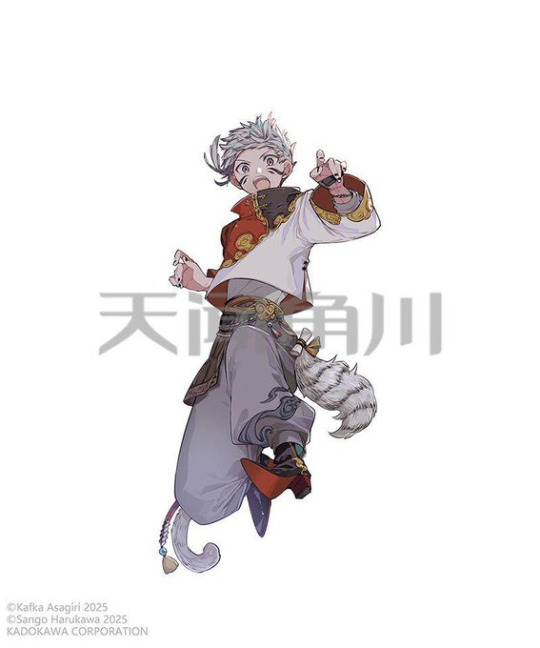
Firstly, there are obvious elements of feng shui: The red colour in the shoes and outerwear symbolises happiness, yellow, although there isn't much of it in Atsushi's outfit, symbolises wealth, and black symbolises the water element.
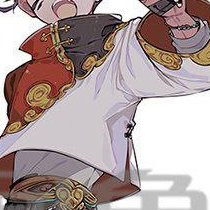
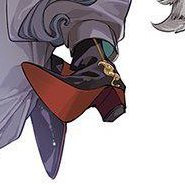
Secondly, Atsushi is shown half in tiger form, and the image of the tiger is also traditional in this practice.

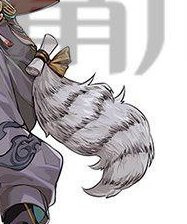
This animal is considered the guardian of the home, family well-being and a symbol of good luck.
Thirdly, the artwork itself is created according to the principle of yin-yang balance: smooth silk fabrics, blue and black shades, and red and gold colours, a stiff belt.

In addition, despite Atsushi's rather graceful and fluid pose, his face reflects the fury and aggression characteristic of a tiger.
Now about my favourite fool, Dazai.
I won't say that Harukawa is straying from the ideas she incorporated into her art with Atsushi. In feng shui, water symbolises movement, change, wealth and abundance. It is believed that paintings with waves attract good luck and financial prosperity.
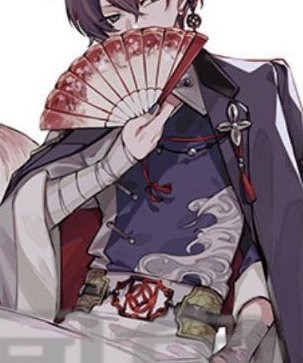
As you can see, the same symbol is depicted on the earring (Happy Pride Month, it's on the left) and on Dazai's belt.
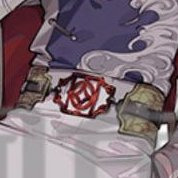
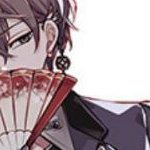
I can't say for sure what it specifically refers to, but here are a few suggestions
Balance of opposites The circle represents the sky, infinity, and yin energy (flexibility, flow). The rhombus symbolises the earth, stability, and yang energy (structure, order).
A sign of prosperity and good fortune In business feng shui, the rhombus is associated with wealth. The circle enhances energy circulation, and red attracts success.
Mysticism In Taoism, such geometric figures symbolise the elixir of immortality (the circle represents spirit, the rhombus represents matter).
Ofc, ver 2 is the most likely, but I like version 3 better because it refers to Dazai, eheh
And, of course, we can't fail to mention Dazai's cute pink tail, who is depicted in the artwork as a Huli-jing (fox spirit).
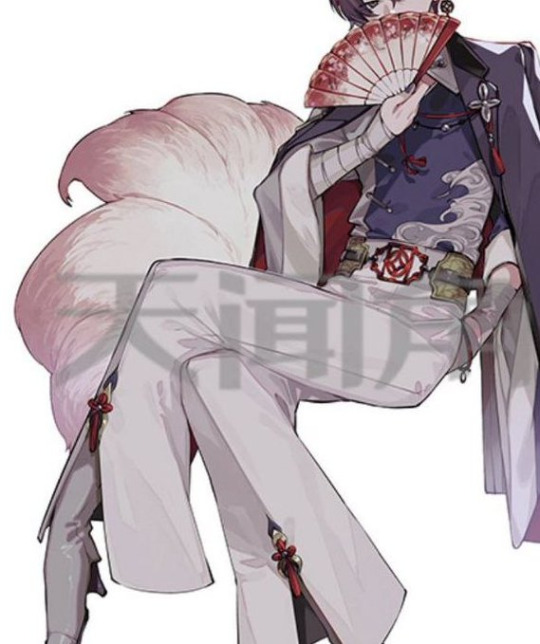
It is considered a powerful creature capable of bringing good luck and wisdom.
In Taoist tradition, it is a symbol of longevity (eheh 2.0) and transformation, as the creature can turn into a human.
UPD: We were shown Ranpo!
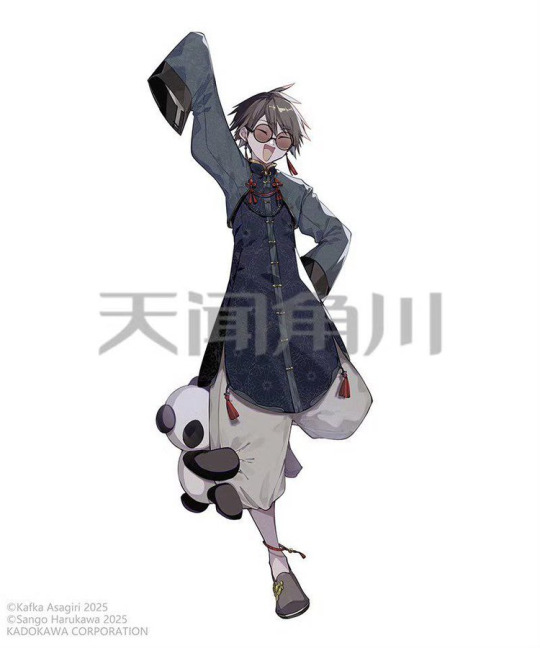
As with Atsushi and Dazai, there is an element symbolising good fortune. In China, the panda is a national treasure associated with prosperity. It is also a symbol of harmony, kindness, peacefulness and prosperity.
That's all, thank you for reading. I understand that very few people will see this post, but I am grateful to you too for taking the time. I hope you found it interesting!
#bsd#boungo stray dogs#bsd dazai#bsd atsushi#dazai#dazai osamu#bungou stray dogs dazai#atsushi nakajima#nakajima atsushi#ranpo edogawa#bsd ranpo#bungou stray dogs ranpo#armed detective agency
30 notes
·
View notes
Text
I am extremely impressed about how popular my occult analysis of Utena became. Thanls to all. So, I thought lets continue and now, lets continue with the rose bride. To do this, lets do a small detour to another series Kunihiko Ikuhara was involved in. Lets talk about sailor moon. You read that I already talked about the masonic pillars and that they represent male and female spiritual energies as well as the moon and the Sun. And that the Middle between the pillars symbolises the unity between moon and Sun.

You might have noticed this composition which is frequently used in sailor moon. Sailor moon uses the same masonic symbolism as Utena.
In many spiritual traditions, male and female were originally united and one of the first stages of the fall of Man is seen as splitting up the male and the female. Plato is famous for talking about that but this is also part of the myth of the Zulu in africa (Credo Mutwa frequently talked about that.) and it also appeared in Hinduism and Kabbalism. Due to these ideas, in germany, its common to call ones wife your "other half" or "your better half" because its Custom to think that your spouse helped you regain that lost unity.
One of the first Actions of queen beryl in the Story was literally to make the boys (endymion and the shitennou) fight against the girls. That was the first Step of the fall.
Sailor Moon as the moon Princess also symbolises the divine feminine lunar principle. In tradition and esotericism, the lunar principle is associated with the virtue of care which usagi definitely displays and with a certain way of chaotic and highly Dynamic but less focused thinking and with emotions. All traits displayed by usagi. And usagis crystal is the silver crystal. In alchemy, silver represents femininity and the moon. (Interestingly, madoka in madoka magica is also connected to silver. Best example here the Song of "your silver garden" in the Ending of the third Film. )
Interestingly, sailor moon is often depicted as standing on the moon sickle. In traditional art, she shares this trait with depictions of the Virgin Mary, the ideal feminine in Christianity.

Mamoru got the Golden crystal. Gold is a symbol for the solar masculine principle. And he got the golden crystal from the sun God helios. And his zodiac sign is the lion. The lion mane is associated with the rays of the sun making the lion another sun symbol. (One other depiction of that is in pokemon Solgaleo which literally means Sun Lion.)
According to certain occultists like Julius Evola and the freemason Manly Palmer Hall, the role of the divine masculine is to help the feminine gain and maintain focus and Stability. This is exactly what Mamoru does to Usagi in the series and to his daughter. (When mistress nine steals chibiusas heart, he literally stabilizes her mind.)
Mamoru often does astonishingly few things in the fight. He mostly helps others do the right thing. This fits with the occult idea of the male as the immovable mover and the Calm stable principle. Like Taoist Lao Tsu wrote " the wise man does nothing but ensures that everything needed to do gets done"
In alchemy, the combination of Gold and silver, due to it meaning man and woman is called a chemical Wedding.
German has a certain trait that in older texts, you can replace the Letter E with Ü and Y. One of the few words where this is still common is the german word denkt (meaning someone thinks) or denken (to think). This can be written as Dünken or dünkt sometimes.
The most famous use of the Word chemical Wedding is in the foundational rosicrucian Text Die Chymische Hochzeit des Christian Rosenkreuz. There, this alchemical Ritual is performed in a tower to resurrect a Dead prince.

This tower is the symbolism between Akio and his Tower.

(By the way. Some depictions of the tower in the rosicrucian book depict the tower as an Obelisk and in ancient egypt, the tower represents the lost phallus of Osiris.)
youtube
CG Jung called the solar and lunar principle Anima and Animus. They are also frequently depicted as twins. Like anthy and akio.
Now, lets finally go to anthy. Her symbolism is more complex. She has traits of the biblical whore of Babylon. Especially in her colour symbolism (Red and purple) . Interestingly, sailor moon uses the exact same symbolisms for its female villains. Especially queen berlin and mistress nine. Anthys Name is connected to the greek godess hera and she shares some similarities to the Pistis Sophia in gnosticism. (Similar to Eve Tokimatsuri in megazone 23)
But now, I want to talk about something else. You know Anthy looks Hindu.

There is a certain left hand path tradition called Tantra which is heavily connected to both Hinduism and Buddhism. (Some anthropologists suggests tantra is a kind of tribal tradition originating from people conquered by the Indians.)
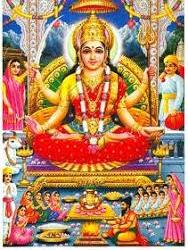
Part of Hinduism is the concept of the divine feminine as Shakti. Shakti is on the one hand this split of feminine site as explained above.
The other aspect is the idea of the divine female principle as energy, power and the ability to do something. (Shakti also literally means energy. There is a certain Ritual to energize someone in tantrism called a Shaktipat.) Kabbala has similar ideas which is an explaination for the so called kabbalistic Flash (where every male Action needs to be Enhanced by a feminine sephiroth leading to a zick zack path)
This concept is also linked to the concept of practical intelligence versus conceptual intelligence. (And interestingly, according to neurologist Simon Baron Cohen, certain people whose brain development was influenced by too much Testosterone have problems with practical intelligence leading to problems in hand eye coordination and movement. This is one origin of the trope of the Nerd who is terrible at sports.)
Due to this, another metaphor for the Shakti is the sword, because the warrior is able to Perform an Action due to having a sword. In Utena, swords are famously generated by womans bodies.
Another metaphor for the Shakti is the term "the bride". And according to occultist Julius Evola, in tantric groups, there are spiritual Contests and only the spiritually strongest is said to fully pocess "the bride". In the context of Utena, this sounds very familiar.
By the way, one infamous aspect of Tantra is orgies. While Utena does not depict that, the series is very promiscous with changing relationships. Sometimes in the Show it really seemed that almost everyone at least once had a relationship with almost everyone else.😅 (By the way, the most famous tantric book is the Kama Sutra.)
One other aspect here. Utena as a character is infamously based on Haruka from sailor moon


And both Haruka and Utena are the most famous tomboys in anime history. While both indeed have a certain small connection to the solar principle (both their Names Tenoh and Tenjou refer to the heaven and the idea of heaven is connected to the solar principle via the greek god Apollon), both of them do not Meet the idea of the "immovable mover".
And tomboys both in Literature and in real life are more associated with energy, dynamism and being wild. ( For example, marle from chrono trigger is once called a tomboy and there is a dialogue where in the next sentence is said "I would like to know how wild she really is")
You see, this fits VERY well with the idea of the feminine as Shakti and energy. (By the way, my girlfriend is a tomboy as well and the idea of shakti energy fits her very well, as well as the tantric metaphor to "ride the tiger")
Utena is more Shakti than solar "immovable mover"
And like I said, Tantra is connected to nomadic, tribal people. The idea of the tomboy is frequently connected to huntresses in civilizations like Mongolia or the japanese Ainu. (Nakoruru from samurai shodown with her pet wolf is also a very good example here.) Sometimes, the greek godess Diana is also mentioned here.
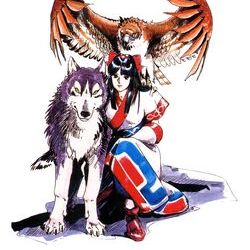
There is also a certain theory that the metaphor of the trapped, oppressed godess (like the gnostic Pistis Sophia and the greek Hera which was one influence on Anthy) might represent the conquering of nomadic civilizations by partriarchical agrarian "right hand path" civilizations.
Aleister crowleys successor Kenneth Grant and the Hippie Philosopher terrence McKenna both also associated the left hand path with nomadic, tribal, paleolithic cultures.

Another aspect about the whole thing. According to the anthropologist and occult researcher Herman Wirth, ancient Germanic Tribes had female priestresses. These priestresses which used magic cauldrons were called the So called Hags. This is where the english term old hag comes from. The german word Hexe (meaning witch) is also derived from the term hag. They were also Experts in medicine etc.
But when the Odin worship was established, the Hags were more and more ostracized, oppressed and sidelined. Later leading to Christian witch hunts. The war between the aesir and the nature gods of the vanir is also seen as a metaphor for the depowerment of the witches and this war in myth has a function akin to the original sin.)
Anthys role as a witch and her slow demonization parallels these theories about real witches rather well.
(Side Note. Herman Wirth is also referenced in Final Fantasy 7. Professor Gast has a similar history and a similar appereance to Herman Wirth and in german, a Gast is a term which can refer to a customer of a Wirth. This also connects Aerith to this topic.)
Madoka Magica has a similar witch symbolism but uses it more as a metaphor for Kierkegaards existential despair and sin as a result of despair.
#shoujo kakumei utena#utena tenjou#revolutionary girl utena#sailor uranus#haruka tennou#occult symbolism#occultism#analysis#religion#anime#anthy himemiya#anthy#shakti#hinduism#indis#india#divine feminine#gnosticism#hermeticism#alchemy#freemasonry#rosicrucian#rosicrucianism#christianity#virgin mary#Youtube
44 notes
·
View notes
Note
Hey Fates first impression anon, I'd love to hear some of the deeper things you like about that game, just some of the stuff the haters don't really bother analyzing. I'm asking because I've seen you mention them broadly a few times by now, but I don't think you've ever listed specific examples aside from the feng-shui analysis (I think that was you, sorry if not). Thanks!
Is it bad if I can't remember if I did the feng-shui stuff either lmaooo.
Nevertheless, Chinese philosophy has a big impact on Fates' themes and messaging in general, yes! And I really enjoy it.
Particularly, what comes to mind is Taoism. Fundamentally (from what I've read), that philosophy means "religion of the way" which rings to Fates central driving point of making a choice to walk down a certain path.
To link to the Wikipedia article: https://en.wikipedia.org/wiki/Taoism
Tao means "the natural way of the universe", perceived not as something visible, but experienced as everyday life.
The practice emphasizes self-cultivation and harmonious existence, as well as effortless action (Wu wei), naturalness (Ziran), simplicity (Pu), and the three treasures of compassion, frugality and humility.
When Buddhism was introduced to China, it and Taoism mutually influenced each other, hence why there are Buddhist influences in Fates as well (Anankos' statue being Buddha inspired).
The virtues espoused in Taoism and Buddhism line up with Corrin's personality to a T. He's compassionate, humble, humane, and authentic. He falters when he doubts his instincts and natural perception, and blossoms when his foundations are supported.
There's also the Yin-Yang symbol, another staple of Chinese philosophy.

As noted, It is representative of principles that ineract, interconnect and perpetuate each other. More than anything, they are thought as simultaneously complementary and opposing forces that, when whole, form something greater than the the parts.
Most apparent, is the light within the dark, and the dark within the light. This symbolism applies to Hoshido and Nohr, where the former is peaceful yet is deeply isolationist and has the capacity for xenophobic violence and discrimination, and the latter is warmongering yet has truly good individuals merely stuck in a bad situation.
Verbatim, this is what Ryoma and Xander say at their coronations in Birthright and Conquest respectively.
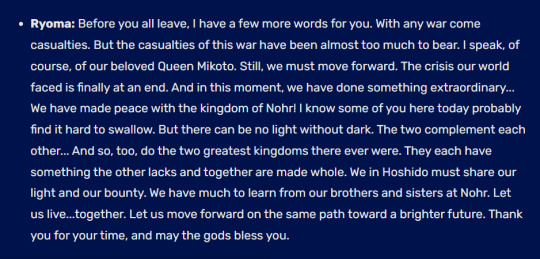

Themes of duality, of mutual trust, influencing and complementing each other, a unity of opposites. This is taoism and yin-yang philosophy.
Another small thing is how Yin (the Dark half with a Light dot) is feminine and Yang (the Light half with the Dark dot) is masculine, which fits how Female Corrin usually represents Nohr and Male Corrin usually represents Hoshido.
What's most important to me in particular, is the literary theme of breaking out of an established status quo, where violence and misunderstanding is treated as a natural and unmoving fact of life.
This is symbolized by Anankos, god of wisdom, a Buddha-like figure who followed Taoist ideals until his descent into madness. Said descent was spurned on by delaying his ascension into a higher plane. He was unable to let go of earthly attachment (his genuine love for humans) and so strayed from the path of wisdom. He lost the part that loves himself and humans when he couldn't control his draconic urges (something that wouldn't have been a problem had he ascended like the other First Dragons) and once humans started fearing him, he began harboring resentment. Ultimately he began to corrupt himself and the world around him.
Corrin, representing universal truth, compassion, and intrinsic duality, rejects this supposed reality, the one that was fostered by a corrupted Anankos. How much of Corrin's attitude is immature naivete, and how much is actually an insightful belief untouched by the world's sins? It's, in fact, not natural to war with one another, to kill on the basis of belief of differences, to reject unity or compassion. Killing itself is bad! And Fates treats death and killing with the weight that's necessary. It's something I really respect as a person who's constantly being beaten down mentally by how the real world wants to force this same message onto everyone.
Thank you for the ask! I hope it was sufficient! I can definitely think of more, but the brain is on cooldown at the moment haha.
#fire emblem fates#fire emblem#fe14#corrin fire emblem#male corrin#female corrin#xander fire emblem#ryoma fire emblem
13 notes
·
View notes
Text
btw buddhist and taoist principles being a part of the work tales of moonlight and rain. blinking going i'm not far enough in to tell whether i'm justified for feeling <3 about this but gestures forever about bsd's themes wrt death and resurrection and death not actually being death and goes. heart emoticon.
11 notes
·
View notes
Text

֍ STRENGTH – Card VIII
TITLE: The Dragon Whisperer / 龍語者 (Lóng Yǔ Zhě)
MYTHIC ARCHETYPE: The Pirate Who Tamed the Storm
TAOIST PARALLEL: Mazu (媽祖) as the Storm-Soothing Sage, merged with Zheng Yi Sao’s (鄭一嫂) legendary pirate queen who silenced mutinies with a glance.
PIRATE TWIST: She doesn’t just call sharks—she negotiates with typhoons. Her "rattle" is a dragonbone flute that plays the five tones of wind (五音風, wǔ yīn fēng).
WHY STRENGTH? She embodies wuwei (無為) mastery—controlling chaos through harmony, not force.
TAOIST PIRATE SYMBOLISM
KEYWORDS (Upright):
Fēng píng (風平, "wind-calming")—serenity as power.
The dragon’s pulse (龍脈, lóng mài)—reading storms like qi meridians.
"Silk rope diplomacy" (絲繩交, sī shéng jiāo)—restraining violence with grace.
KEYWORDS (Reversed):
Hǔ jí (虎急, "tiger’s panic")—fear breaking focus.
A cut qín string (斷琴弦, duàn qín xián)—lost harmony.
The Dragon’s snarl (龍哮, lóng xiào)—nature rejecting your touch.
INTERPRETATION: This card is strength as fluidity. The Whisperer doesn’t chain the dragon—she sings it to sleep.
RITUAL: THE FIVE WINDS FLUTE (五音笛, Wǔ Yīn Dí)
(Inspired by Ming naval weather magic and Taoist sound healing)
PURPOSE: To calm inner or outer turbulence through resonant harmony.
MATERIALS:
A flute (or a seashell to blow into).
Five ribbons (blue, green, red, white, black).
A bowl of brine.
A candle (yellow or blue).
STEPS:
Tie the ribbons to the flute, chanting:
东风向你招呼,南风向你进攻,西风向你屈服,北风向你跪下,中风将你封锁。 The east wind greets you, the south wind attacks you, the west wind submits to you, the north wind kneels before you, and the middle wind seals you away.
Dip the flute in brine (to "salt" its voice). Play one long note per wind direction.
Blow out the candle with the last note—the storm is tamed.
PARALLEL MYTHOLOGY
TITLE: The Shark Tamer / The Hand That Calms the Deep
MYTHIC ARCHETYPE: The Shark Caller (Melanesian Shamanic Tradition)
REGION: Melanesia, particularly Papua New Guinea and the Solomon Islands.
TALE: In these island cultures, certain individuals are born into lineages with the power to "call" sharks. This is not a trick; it is a profound shamanic practice. The caller prepares for days with ritual purification and abstinence. They then go out to sea in a canoe, using a special rattle made of coconut shells and other magical implements to create a specific sound. They chant secret names and incantations, which draw the sharks to the boat. It is an act of immense courage and deep spiritual connection, facing the ocean's ultimate predator with nothing but knowledge, tradition, and calm inner power.
WHY STRENGTH? This is a perfect fit. The Shark Caller embodies the core principles of the Strength card:
COURAGE: Facing primal fear (the shark) without aggression.
INNER POWER: Using subtle forces (chants, rattles, knowledge) rather than physical might.
PATIENCE & COMPASSION: Understanding the nature of the beast to influence it.
INTEGRATION: The goal is to bring the wild power of the shark into a relationship with the human world, integrating the raw, instinctual self with the conscious, disciplined self.
INTERPRETATION THROUGH THE SHARK CALLER: To draw this card is to be told you have the inner strength to face a situation you fear. Do not meet it with brute force. Meet it like the Shark Caller. Understand its nature, have compassion for its wildness (whether it's your own anger, a difficult person, or a challenging situation), and use your quiet, persistent inner power to bring it into harmony. You have the gentle hand that can tame the lion—or the shark.
THE RITUAL OF CALLING YOUR SHARK (For Integrating Inner Power)
OBJECTIVE: To bravely face a powerful "beast" within yourself, not to destroy it, but to understand it and integrate it as a source of controlled strength.
MATERIALS:
An object that represents your inner shark (a shark tooth, a dark stone, a drawing of a shark).
A bowl of saltwater.
A rattle or a small bell. Anything that can create a rhythmic, focused sound.
A safe, quiet space where you will not be disturbed.
STEPS:
CREATING THE LAGOON: Sit on the floor and place the bowl of saltwater in front of you. This is your safe ritual space, your lagoon.
NAMING AND SUMMONING: Hold the shark object. Name the inner beast you are facing. "My untamed anger, you are my shark." or "My crippling self-doubt, you are my shark." Place the object in the center of your space. Now, begin to gently shake the rattle. This is you, the Caller. You are not running; you are summoning. Close your eyes and allow the feeling—the anger, the fear—to rise within you. Let it fill the space. Just observe it. This is the act of courage.
THE GENTLE HAND (TONIC OF IMMOBILITY): When the feeling is at its peak, stop rattling. Open your eyes and look at the shark object. Now, perform the central act. Reach out your hand—slowly, calmly, deliberately. Do not grab the object. Gently place your fingertips on it. This is the touch on the shark's snout. As you touch it, project feelings of calm, acceptance, and compassion, not fear. Speak to it. "I see you. I am not afraid of you. I honor your power."
THE INTEGRATION: Keep your hand on the object. Feel the intense emotion begin to subside, transformed by your calm acceptance into a manageable energy. Now, make your pact with it. "Anger, you will be my strength to protect my boundaries. You will not be my rage that harms others. You will serve me."
SEALING THE PACT: Lift the object and dip it into the bowl of saltwater, anointing and purifying it. Hold it to your heart. Say: "The beast within is not my enemy. It is my strength. We are one."
CLOSING: Keep the charged shark object on your altar or carry it with you. When you feel that old, raw emotion rising, touch the object to remind yourself of your pact and your own inner strength. The ritual is complete.
SYNCRETIC BRIDGE
Shark Caller’s Rattle → Dragonbone Flute: Both use sacred sound to commune with predators.
Tonic Immobility → Wuwei: Non-action as the ultimate control.
THE "SCHOLAR'S HEART" MANDATE:
Sources: This is a well-documented anthropological phenomenon. See: references of Zheng (鄭和) "calm wind" flags—silk banners inscribed with Taoist wind-bindings as well as ethnographic studies on the art and rituals of Melanesia, such as the works of anthropologist A.B. Deacon or museum collections that feature shark-calling rattles and ritual art. For the ritual see: 《南海巫法秘本》[Southern Sea Witchcraft Manual], 1809.
#龍語者#tarot#Taoist-Pirate rituals#strength#sea folklore#ocean mythology#chinese translation#Shark Tamer#five wind flute
9 notes
·
View notes
Text
About Yae Miko again.
For me she feels more like a huli jing than a kitsune, a Chinese fox despite being Inazuman. Kitsunes always seem more noble in a weird way to me, even when evil or playing silly pranks, while Chinese are more ethically omnivorous. More of an animal than a spirit.
She also fits the "fox advising a ruler" trope (older fox stories were mostly about that, I think it was Pu Songling who made them more interested in common folk, or maybe tradition shifted around his time) and "fox falling for a person with principles" trope (those were usually Taoist monks but I guess Ei fits too).
Which creates a really funny dynamic. She's pretty much chaotic evil by nature and enjoys hurting people and Feeling Important but she plays nice and responsible because she is loyal to Ei. Foxes are incredibly loyal in both kitsune and huli jing stories, it's the only thing that outweighs their tricksterish nature.
She still has her fun when possible but she is only nasty when it doesn't harm anyone. She hurts people's feelings and bullies them but doesn't do anything truly destructive.
Being destructive would destabilise the kingdom and upset her beloved, she can't have that.
41 notes
·
View notes
Text
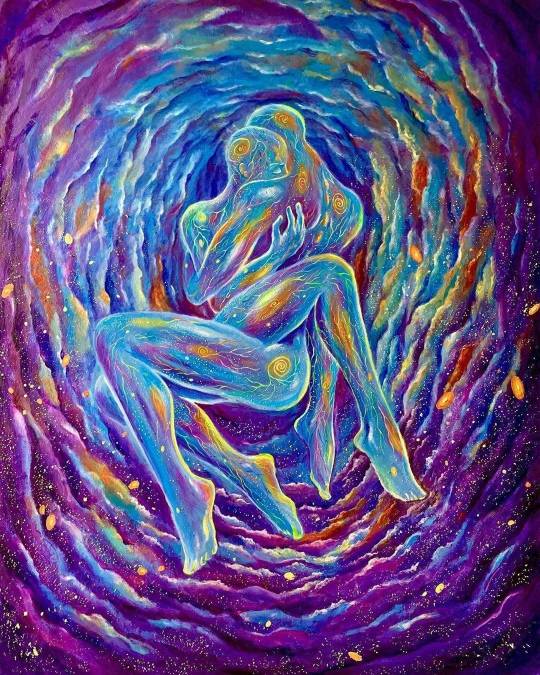
Love in Outer Space ☆
The Vibratory Movements of the Universe
Just like the esoteric oriental tradition of spirituality, modern physics does not conceive matter as being passive, inert, static, but as being in a continuous vibratory movement. The rhythms of these movements are determined, among other things, by the atomic, nuclear and molecular structures. Therefore both science and spirituality converge toward the idea that the Universe is dynamic, being in a continuous movement of oscillation. Nature is not in a static, but in a dynamic equilibrium. Here is what a Taoist text says about this matter:
The silence in silence is not the true Silence. Only when there is calmness in movement, the spiritual rhythm [vibration] which penetrates the Sky and the Earth is born.”
Therefore everything is vibration. Here is what the scientists say about the subject: Everything is vibration. Everything is movement. The Void [Primordial Substratum] fluctuates, according to certain laws, between Existence and Non-existence. The quanta [a small, indivisible unit of energy] born as a result of the vibratory movement of the void, are ‘virtual’, i.e. they do not materialize into real particles that can be observed. They need a certain mass and energy in order to have material existence. The whole Universe is made of the smallest atoms to the greatest galaxies. Their common element is that they are all moving. WHY everything is moving is a question to which modern science has no answer. Modern science has however made some progress in explaining HOW things move. Modern (quantum) physics states the existence of FOUR FORCES (assuming as a hypothesis the necessary existence of a FIFTH FORCE which unifies the first four). This theory is a rediscovery of the eastern philosophy of the five tattva-s (or subtle principles – ‘earth’, ‘water’, ‘fire’, ‘air’, ‘ether’). According to physics, the four forces who act in the Universe are: the ‘strong’ and the ‘weak’ forces (who keep atoms together), the force of gravity (who describes the movement of bigger material bodies) and the electromagnetic force (such as light). All these four forces have something in common: they all move in ‘waves’. Therefore the waves represent the basic movement of the Universe.
49 notes
·
View notes
Text
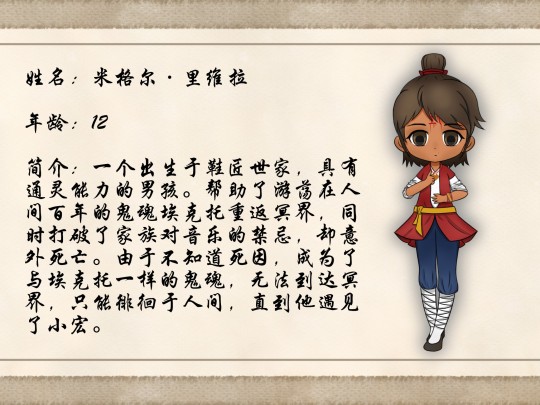
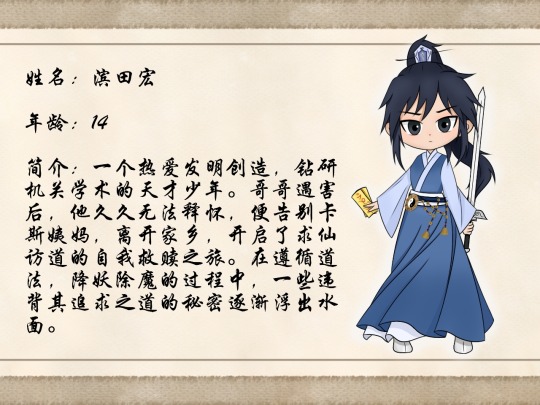
Hi! I’m a new fan of Higuel and recently signed up for a Tumblr account.(I hope I'm not too late to join the fandom) I want to share my own Chinese-style AU fan creation about them—I absolutely adore this pairing! I hope you’ll enjoy it too! Due to regional differences, I’ve translated this content into English. Thank you for understanding! Here’s the translation:
P1.Name:Miguel Rivera
Age:12
Introduction:A boy born into a family of shoemakers with psychic abilities. He helps Hector, a century-old ghost wandering the human world, return to the Underworld while breaking his family's musical taboo, only to meet an untimely death. With the cause of his demise unknown, he becomes a spirit like Hector—trapped in the human realm, unable to reach the afterlife—until his fateful encounter with Hiro.
P2.Name:Hiro Hamada
Age:14
Introduction:A genius youth passionate about invention and mechanical and academic studies. Haunted by his brother's tragic murder, he bid farewell to Aunt Cass and left his hometown to embark on a journey of self-redemption through Taoist enlightenment. While practicing Taoist principles and combating demons, secrets contradicting the very Tao he pursued began to surface relentlessly.
#higuel#hiroguel#miguel rivera#hiro hamada#crossover#disney pixar#alternative universe#AU#hiro x miguel#miguel x hiro#disney fanart#pixar fanart#pixar coco#big hero 6#big hero six#coco pixar
17 notes
·
View notes
Text
As annoyed as I am that we don't actually get any more details about Kusu himself (how was he chosen to bear the sword, did he have a life before this, does he have any hobbies in between slaying mononoke, DOES HE HAVE A THING FOR KAYO (actually I'm not taking no for an answer on this one), how does he feel about his job, what happens if he's "decommissioned" and he's no longer needed as the medicine seller?) I do love that we get a better idea of the logic informing the worldbuilding now.
Japanese culture is influenced by an inseparable amalgamation of Buddhism, Shintoism, Taoism and Confucianism, all of which are twisted cultural knots of their own, but it's interesting how they're being specifically synthesized here. It seems to be a primarily Buddhist/Taoist base with some Confucian principles influencing Shinto aspects with a healthy dose of imagery from LITERALLY EVERYTHING (the hieroglyphs on the exorcism swords box??) to create a unique mythology schema. In the interview Nakajima-san uses a lot of terms I couldn't find any information on but he does describe the basic logic as "Mukyoku gives rise to Taiji, Taiji is divided into Yin and Yang, and both sides give birth to both sides". Mukyoku is the Chinese philosophical concept of Wuji (pole/infinity) and Taiji is the concept of basically Life, The Universe, Everything, including how all the aspects of yin and Yang influence each other. Big stuff!
Tbh I'm not a huge fan of manga or anime having this kind of rigid numerical/hierarchical structure. I get that it's how a lot of east Asian philosophies and religions are organized but explaining that hierarchy often becomes the focus of the story instead of exploring the characters within it. Fortunately it seems like Nakamura-San is still interested in those personal stories (EXCEPT FOR KUSU'S DAMN IT) so I think he just felt it was necessary to explain this so that all the discrepancies between media made more sense.
Anyways I'm praying we get a story bible released someday.
40 notes
·
View notes
Text
Today's apocryphal Sun Tzu quote
The only thing that will remain, when it's all over, are your own emotions.
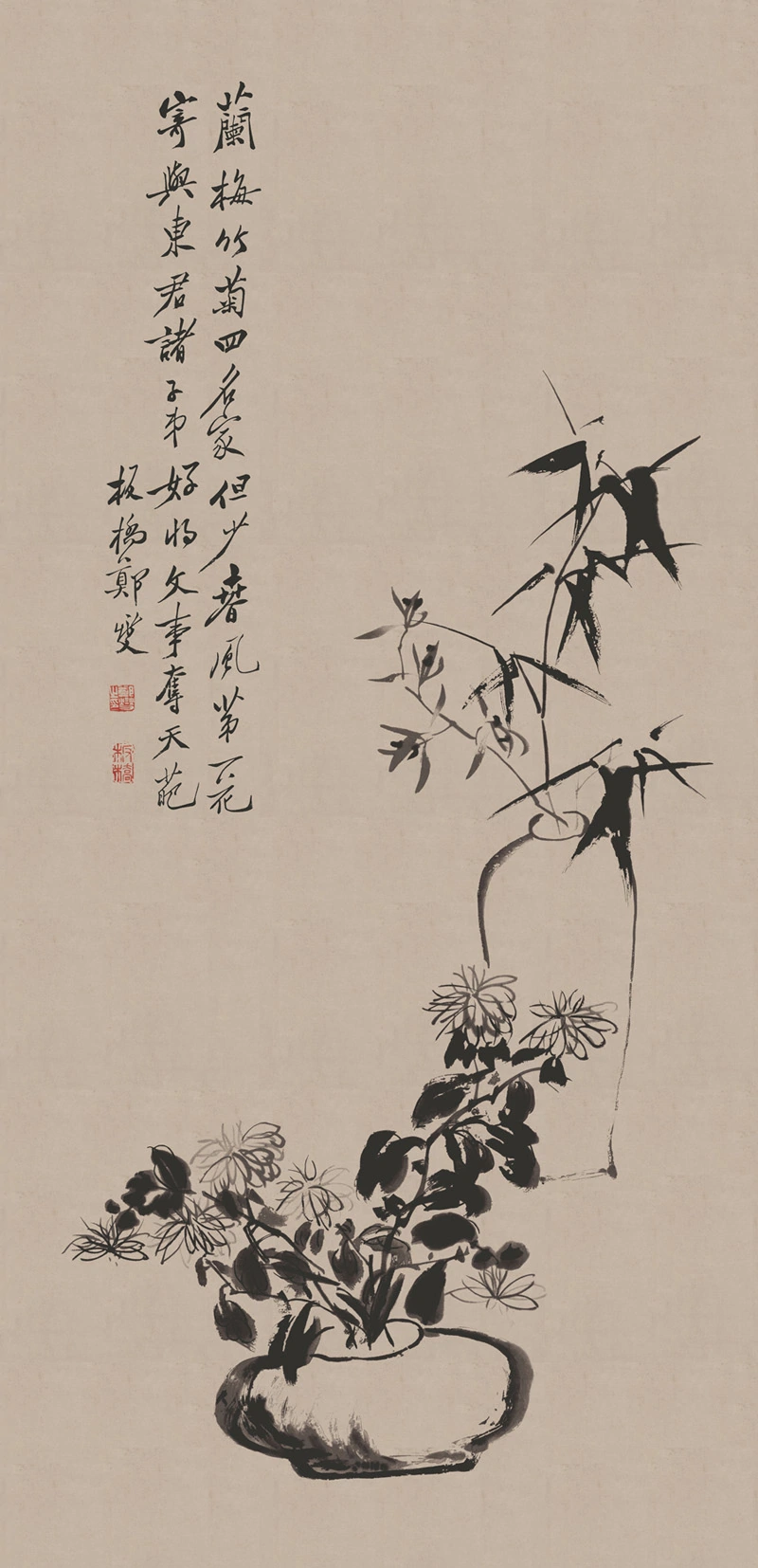
Zheng Xie - Three Purities, 1745 AD
Sidenote: this has to do with the Taoist representation of a superior, trinitary principle or energy (spiritual, earthly/life related and creative). Zheng Xie allegorically summed it up in this elegant sketch, way ahead of his time.
37 notes
·
View notes
Text

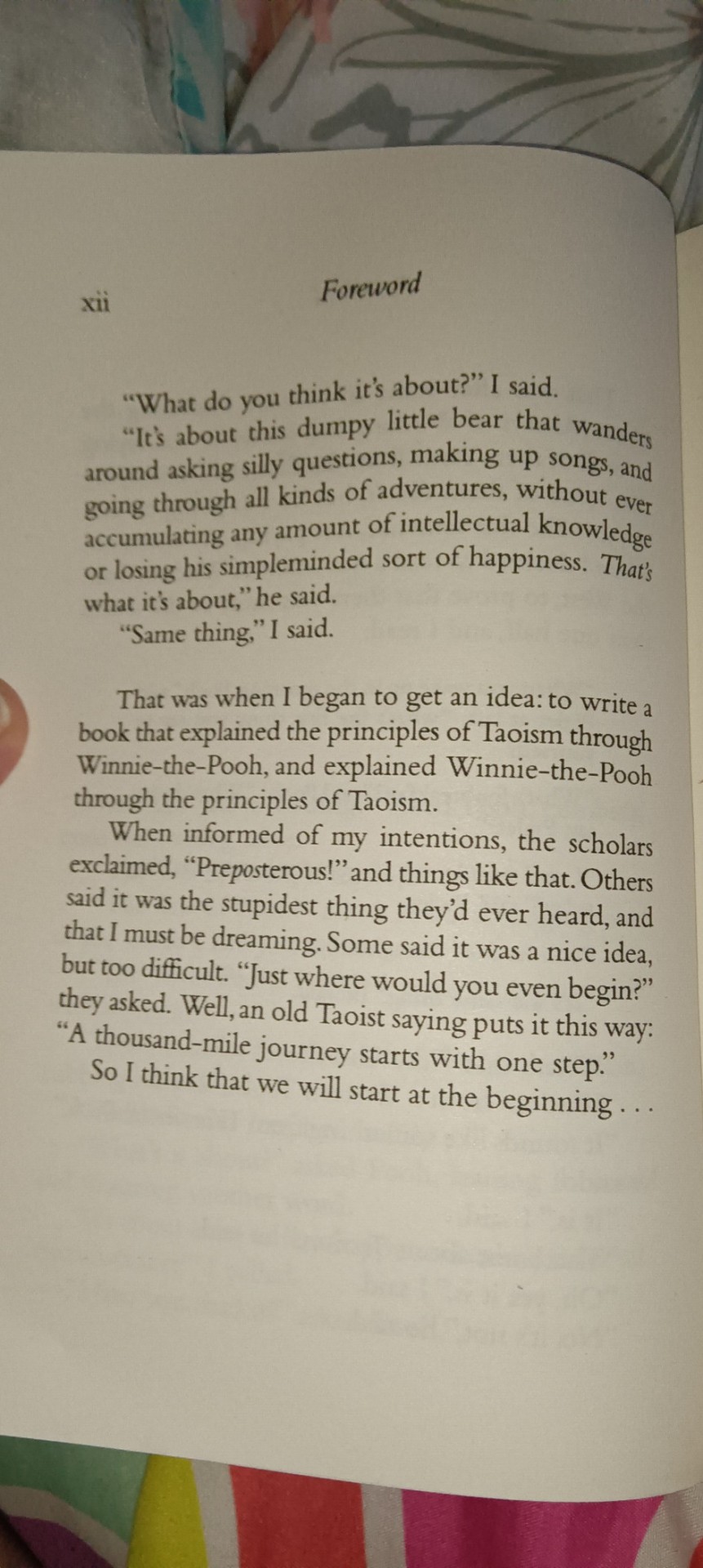


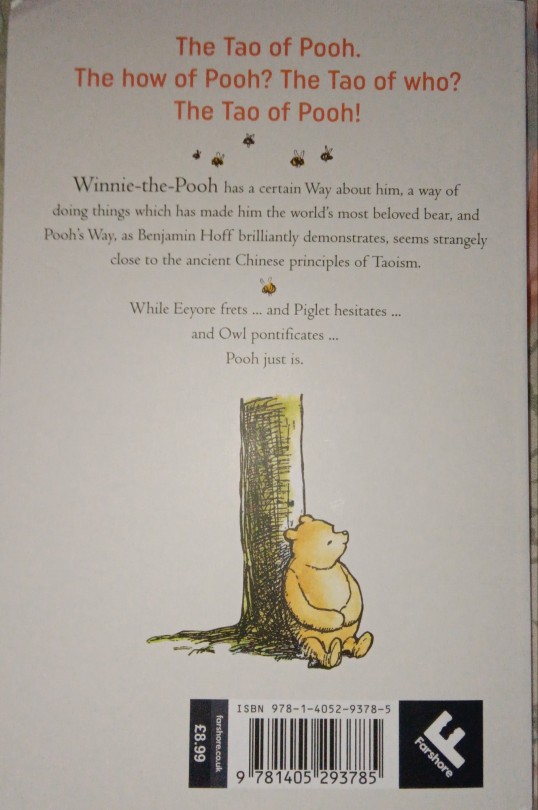

In the world of Pooh, the Cottleston Pie Principle represents the Taoist ideal of Inner Nature, which encompasses the unique aspects inside everything. Everyone and everything has characteristics inside that differentiate them from others, similar to the way that no two snowflakes are the same.
Nov 8, 2020
Nov 8, 2020 Google
60 notes
·
View notes